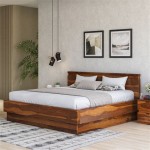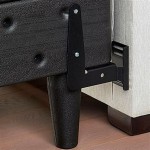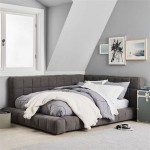DIY Canopy for Bed
A canopy bed adds a touch of elegance and romance to any bedroom. While purchasing a pre-made canopy bed can be expensive, creating a DIY canopy offers a cost-effective and customizable alternative. This article explores various methods for constructing a DIY bed canopy, catering to different skill levels and aesthetic preferences.
Before embarking on a DIY canopy project, careful planning is essential. The first step involves determining the desired canopy style. Options range from simple draped fabrics to more structured frames made of wood or metal. Consider the existing bedroom décor and choose a canopy style that complements the overall aesthetic. Measurements of the bed are crucial for determining the required materials and ensuring a proper fit.
A simple and popular DIY canopy involves draping fabric from a central point above the bed. This method requires minimal materials and tools. A hook securely fastened to the ceiling directly above the center of the bed serves as the anchor point. Lightweight fabrics like sheer curtains, muslin, or mosquito netting work well for this style. The fabric can be draped directly from the hook or hung from a decorative ring or hoop for added visual appeal. Adjust the fabric draping to achieve the desired look.
For a more structured canopy, a hoop suspended above the bed provides a solid foundation. Embroidery hoops, hula hoops, or even repurposed bicycle rims can serve this purpose. The size of the hoop should be proportionate to the bed size. Fabric is then draped or gathered around the circumference of the hoop. Ribbons, twine, or decorative rope can be used to suspend the hoop from the ceiling. Ensure the suspension method is secure and can support the weight of the hoop and fabric.
Constructing a wooden frame offers another option for a DIY canopy. This method requires basic woodworking skills and tools. The frame can be designed to fit the bed precisely, creating a more integrated look. Lightweight wood, such as pine or balsa, is recommended for ease of construction and hanging. The frame can be assembled using screws, nails, or wood glue. Once constructed, the frame can be painted or stained to match the existing bedroom furniture. Fabric can then be draped or attached directly to the frame using staples or upholstery tacks.
A more elaborate canopy can be created using metal piping or rods. This method allows for greater customization in terms of shape and design. Metal piping can be bent and shaped into various configurations, from simple rectangular frames to more intricate curved designs. Connections can be made using pipe fittings or specialized metal adhesives. Ensure the structure is stable and securely fastened to the ceiling or wall. Fabric panels can be sewn or clipped onto the metal frame, providing a polished and professional finish.
Adding decorative elements enhances the visual appeal of a DIY canopy. Fairy lights, ribbons, tassels, or beaded trim can be incorporated into the design. Consider the overall aesthetic and choose embellishments that complement the canopy fabric and bedroom décor. These additions can personalize the canopy and create a unique focal point in the room.
Safety considerations are paramount when installing a DIY canopy. Ensure the hanging mechanism is robust and can support the weight of the canopy structure and fabric. Use appropriate anchors and fasteners for the ceiling or wall material. Regularly inspect the canopy for any signs of wear or damage. If using electrical components, such as fairy lights, ensure they are properly installed and meet safety standards.
Maintaining a DIY canopy involves regular cleaning and upkeep. Fabric canopies can be removed and laundered according to the fabric care instructions. Frames should be dusted and inspected for any damage. Replace any worn or damaged components promptly. Proper maintenance ensures the longevity and continued enjoyment of the DIY canopy.
Creating a DIY canopy for a bed offers a rewarding and creative project. By carefully considering design options, materials, and construction techniques, individuals can transform their bedroom into a personalized haven. From simple draped fabrics to elaborate framed structures, the possibilities for DIY canopy designs are vast, allowing for customization and self-expression.
The choice of fabric plays a significant role in the overall aesthetic of the canopy. Consider the desired level of light filtration and privacy when selecting fabric. Sheer fabrics allow light to filter through, creating a bright and airy atmosphere. Opaque fabrics offer greater privacy and create a more enclosed and intimate feeling. The color and pattern of the fabric should complement the existing bedroom décor.
Lighting within the canopy can further enhance the ambiance. Battery-operated fairy lights or LED strip lights can be woven into the fabric or attached to the frame. This creates a warm and inviting glow, perfect for relaxing and reading in bed. Consider using dimmable lights to adjust the brightness according to preference.

14 Diy Canopies You Need To Make For Your Bedroom

House Home Diy No Sew Canopy Bed

25 Diy Canopy Beds To Make You Feel Like Re On Safari

Easy Canopy Crafts Diy Bed

20 Magical Diy Bed Canopy Ideas Will Make You Sleep Romantic

Make An Inexpensive Diy Bed Canopy Our Peaceful Planet

Diy Pottery Barn Canopy Bed Lavender Brook Home

Diy Canopy How To Make A Bed Easiest Way Geetika Arya

Diy Bed Canopy An Easy Way To Make Your Own

14 Diy Canopies You Need To Make For Your Bedroom
Related Posts







